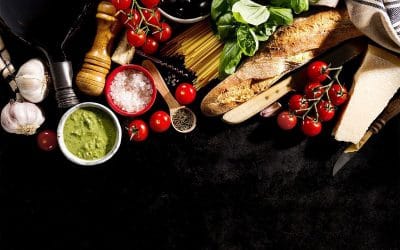The world is moving faster and faster. From a very young age, we are taught to dress quickly, finish our homework quickly, or even, often unintentionally, to eat in a hurry. and rushing to adapt to a routine that is always wrapped up in the speed of things.
In the face of all this day-to-day hustle and bustle, and more specifically in the FOOD INDUSTRYmore than a quarter of a century ago, a new and strong the Slow food movement, or, in other words, the art of eating with attention, with a particular focus on quality and, therefore, taking into account the origin of the raw materials, the ingredients and the way they are cooked.
The Salone del Gusto 2018, organised by this movement, closed in Turin on 24 September.
From the Mexican milpa to the diet of the Maasai in Kenya, indigenous peoples have brought to this diet the fair his idea of healthy eating as an antidote to the diseases of the 21st century, something they have been doing since time immemorial.
A movement present in 160 countries
The Slow Food movement was founded in 1986 on the initiative of the Italian Carlo Petrini and a group of activists. with the initial aim of defending regional traditions, good nutrition, gastronomic pleasure, as well as a slow pace of life.
After two decades of history, the movement has evolved to accommodate a holistic approach to food, that recognises the strong relationships between our food, the people who produce it, our planet, politics and culture.
Today Slow Food represents a global movement that involves thousands of people and projects across the world. more than 160 countries.
Responsibility at mealtimes
The Slow Food movement works to prevent the disappearance of local food cultures and traditions, to counteract the rise of fast-paced lifestyles, and to promote local food production. to combat the general lack of interest in food consumption, where they come from and how our food choices affect the world around us.
If we know the origins of our food, the people who produce it and the methods of production, children and adults alike will be able to we will learn to combine pleasure with responsibility in our daily choices, as well as to appreciate the social and cultural impact of food.
Educating the sense of taste
Slow Food has numerous educational projects in various parts of the world that differ from most food education programmes in that they are based on the idea that food is synonymous with pleasure, culture and conviviality.
These projects are organised for diverse audiences, from children to adults, teachers, Slow Food members and the general public.
These include: school gardens, guided tastings, farm visits, generational knowledge exchange, practical workshops and meals with producers.
In addition, Slow Food opened the University of Gastronomic Sciences in Italy in 2004 to provide a global perspective on the academic world of food.
Good, clean and fair food
The main objective of the Slow Food movement is that we can all have access to and enjoy food that is good for us, for those who produce it and for the planet, in opposition to the standardisation of taste and culture and the unlimited power of the multinational food industry and industrial agriculture.
Your three basic principles are:
- Good: tasty, fresh, seasonal food that satisfies the senses and is part of the local culture.
- Clean: production and consumption of food that does not harm the environment, animal welfare or human health.
- Fair: affordable prices for consumers and fair remuneration for producers.
This movement works in many parts of the world to protect food biodiversity, create links between producers and consumers and raise awareness of the urgent issues affecting our food system.
And the fact is that... Eating sustainably and respectfully with our environment is always an option within our reach.
Do it slowly
I recently became aware of the association Cittaslow, an idea that was born two decades ago in a small town in Tuscany.
This interesting initiative is an association that unites the philosophy of slowfood, the ecogastronomyIt promulgates considering the city itself as a definitive element in people's quality of life and therefore in their happiness. Obvious, right?
These are ideas that can really be defined as "common sense"; such concepts emerge at a time in history when everyone is talking about "a paradigm shift". Is development possible from slowness, from calm?
In a society in which everything that is valuable is material or round (see football), everything drags us towards emptiness, subsisting from the intangible, from the world of ideas, of values, is quite a feat.
These decision-makers - most probably mayors - who decide join Cittaslowwho are attracted by recovering, enhancing and protecting a way of lifea calm, slow and silent life.
At some point, they have questioned what is really essential and have appreciated the importance of knowing how to stop, to contemplate, to see beyond, they have questioned what has really made them happy.
For all this, it is necessary to stop. Becoming aware of the succession of the seasons, of valuing work done with the hands (really done with the heart; craftsmanship), the value of art, the authenticity of products, the value of a good meal or a good wine?
I call all this culture.
- Saber smell.
- Saber taste.
- Saber see.
- Saber enjoy.
At Senda we understand that development based on these values IS possible. These are the keys that move us and also, of course, to contribute with our grain of sand in the joy of a life made of the sum of experiences that are worthwhile.
Sustainability as a core value
If your values also go hand in hand with sustainability, don't miss the following related articles:


Add comment